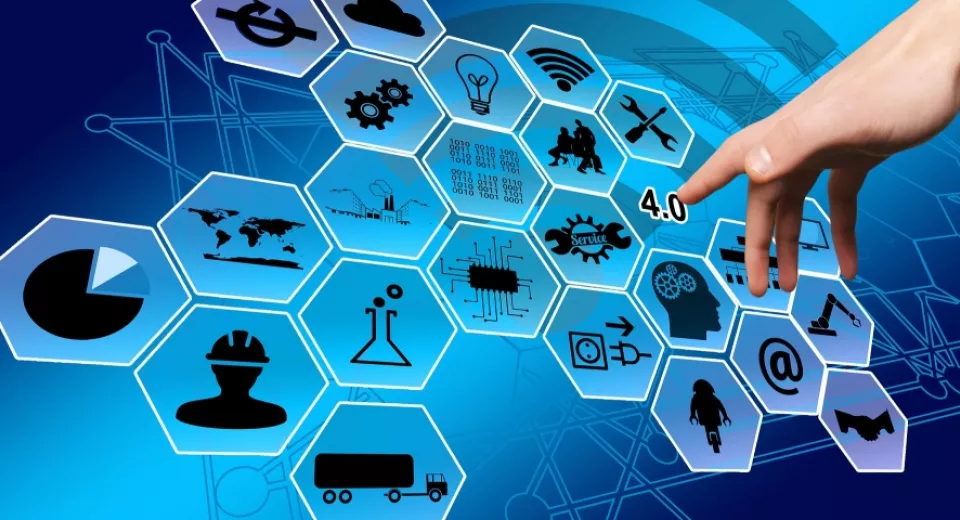Digital sea

How data give a boost to the blue economy
Data are the new gold. This resource can also be of immense value to the blue economy. For instance, big data contribute to the optimisation of complex activities at sea, thus making the blue economy more sustainable and profitable. As a spearhead cluster, Blue Cluster aims to help make this possible.
Technological developments such as big data, machine learning and AI will have far-reaching consequences for the world at large. They are the foundation of Industry 4.0. Just think of the Internet of Things (IoT), with sensors generating data from devices and forwarding them to a computer. The intelligent network thus created allows engineers and technicians to monitor, adjust and (preventively) optimise processes.
This development is of great interest to the maritime sector too, since the coast, sea and ports form a complex system in which all elements have an influence on each other. Digitisation and smart technologies guarantee greater clarity and efficiency, thanks to their capacity to process huge quantities of data. In this respect, Blue Cluster is also making a significant contribution through innovation and design – or, in other words, the preparatory work.
A new generation of wind turbines
A very concrete project involving new technology in the maritime sector is Supersized 4.0: the installation of a new generation of gigantic offshore wind turbines (with a greater capacity). It is an indispensable investment, since offshore energy is virtually the only option for Flanders to achieve the climate objectives.
As a precondition, the new wind farms need to function optimally, because larger turbines also mean more vibrations and therefore higher maintenance requirements. In order to meet these requirements, the data concerning the existing turbines are monitored continuously. This information makes it possible to map unplanned downtimes and under-performing turbines.
These insights will enable the operators of the new wind turbines to optimise the functioning of the systems and carry out preventive maintenance, including several months in advance. In the long run, the aim is that computers perform the work and automatically adjust the planning whenever preventive maintenance turns out to be required.

All this will have the long-term effect of lowering the energy cost for consumers: nuclear power is currently still cheaper, but only because those power plants have been written off. If we succeed in keeping our wind farms in optimum condition, their cost will quickly decrease thanks to the surplus revenue.
The Internet of Things sensors installed on the turbines also play an important role, in particular since offshore wind energy installations are sometimes inaccessible for weeks on end due to storms. As these sensors measure thousands of parameters per second and send the measurements to the control room via data links, the wind farms can be remotely monitored as a whole. In addition, the input is stored in the cloud with its unprecedented processing capacity, so that new insights can be gained.
Drone as depth sounder
Another monitoring project is Echodrone, a partnership between the Port of Antwerp and the Bruges maritime technology company dotOcean. This concerns an unmanned, electrically powered catamaran that automatically measures the depth of berths for ships. This makes it possible to determine in time whether maintenance dredging needs to be carried out so as to remove deposited sediment.
Depth sounding is currently the principal task of Echodrone. But in the future, Echodrone could also be used for inspecting maritime infrastructure such as quay walls, lock gates, concrete (for alkali-silica reaction), the space between two vessels, etc. The possibility of measuring the water quality and detecting oil slicks is also investigated.
Echodrone offers a wide range of benefits: autonomous and crewless navigation, as well as low operation and maintenance costs. Thanks to its modest size, it manoeuvres easily in areas that are difficult to reach and hazardous for workers (sloping surfaces, shallow waters, etc.).
Work remaining to be done
So these projects have considerable potential, but a lot still needs to be done. The objective is to deploy several unmanned surface vehicles in ports and at sea in due course. These unmanned surface vehicles will become ever smarter, but this still requires a great deal of research.
The main challenge for new wind farm zones is to transfer the generated power to the mainland – especially in case they are further out to sea. Converting electricity into hydrogen is an alternative, given that the latter is easier to store and transport. However, this option is still in the research phase and not yet profitable.
In this context, Blue Cluster is also the initiator of several projects. As a cluster organisation incorporating numerous complementary businesses, we are efficient at bringing parties together.